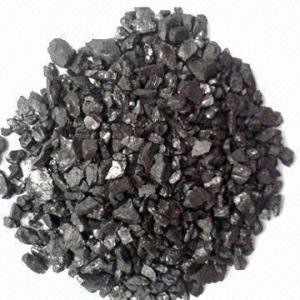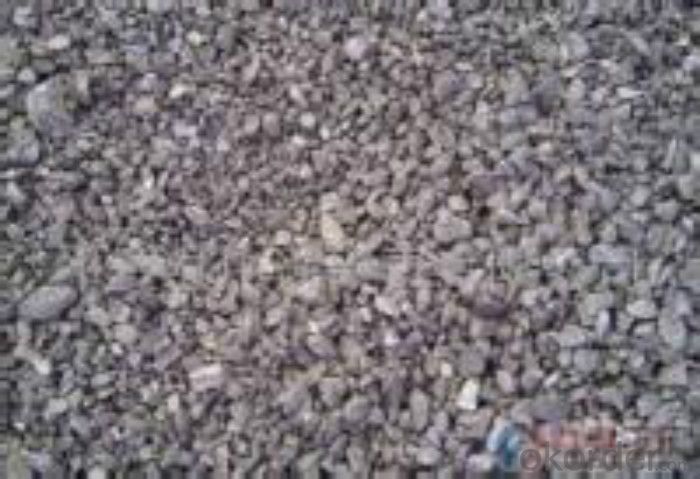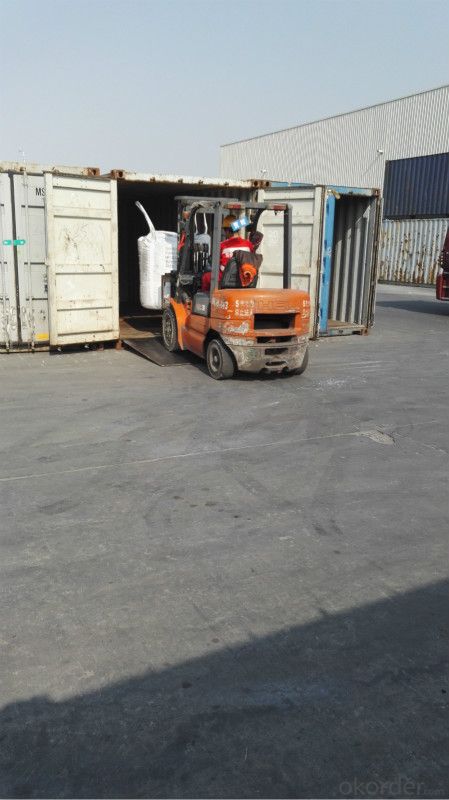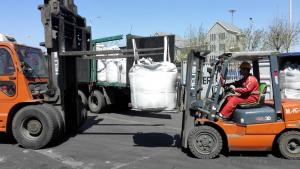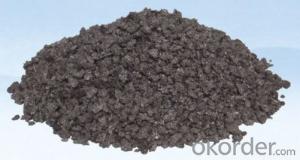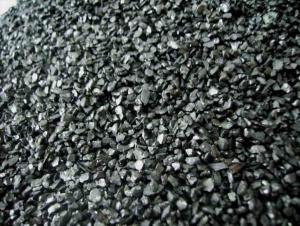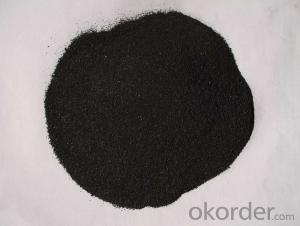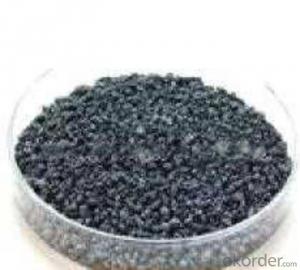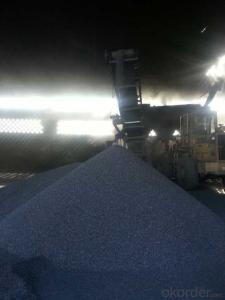FC85 Calcined Anthracite Coal as carbon additive in steel industry
- Loading Port:
- Tianjin
- Payment Terms:
- TT or LC
- Min Order Qty:
- 40 m.t.
- Supply Capability:
- 9600 m.t./month
OKorder Service Pledge
OKorder Financial Service
You Might Also Like
Specification
Introduction
Carbon Additive/Calcined Anthracite Coal may substitute massively refinery coke or graphite. Meanwhile its cost is much less than the refinery coke and graphite. Carbon Additive is mainly used in electric steel ovens, water filtering, rust removal in shipbuilding and production of carbon material.
Features
Carbon Additive also called Calcined anthracite Coal, Gas Calcined Anthracite Coal, Carbon Raiser, Recarburizer, injection coke, charging coke and etc. It is playing more and more important role in the industry.
The main raw material of our Carbon Additive is Ningxia unique high quality Taixi anthracite, with characteristic of low ash and low sulfur. it is playing more and more impoetant role in the steel industry. Carbon additive has two main usage, fuel and additive. When being used as the carbon additive of steel-smelting, and casting, the fixed carbon may achieve above 95%.
Best quality Taixi anthracite as raw materials through high temperature calcined at 1200-1250 ℃ for 24 hours by the DC electric calciner with results in eliminating the moisture and volatile matter from Anthracite efficiently, improving the density and the electric conductivity and strengthening the mechanical strength and anti-oxidation, It has good characteristics with low ash, low resistivity, low carbon and high density. It is the best material for high quality carbon products, it is used as carbon additive in steel industry or fuel.
Specifications
PARAMETER UNIT GUARANTEE VALUE | |||||
F.C.% | 95MIN | 94MIN | 93MIN | 92MIN | 90MIN |
ASH % | 4MAX | 5MAX | 6MAX | 7MAX | 8MAX |
V.M.% | 1 MAX | 1MAX | 1.5MAX | 1.5MAX | 1.5MAX |
SULFUR % | 0.5MAX | 0.5MAX | 0.5MAX | 0.5MAX | 0.5MAX |
MOISTURE % | 0.5MAX | 0.5MAX | 0.5MAX | 0.5MAX | 0.5MAX |
Pictures
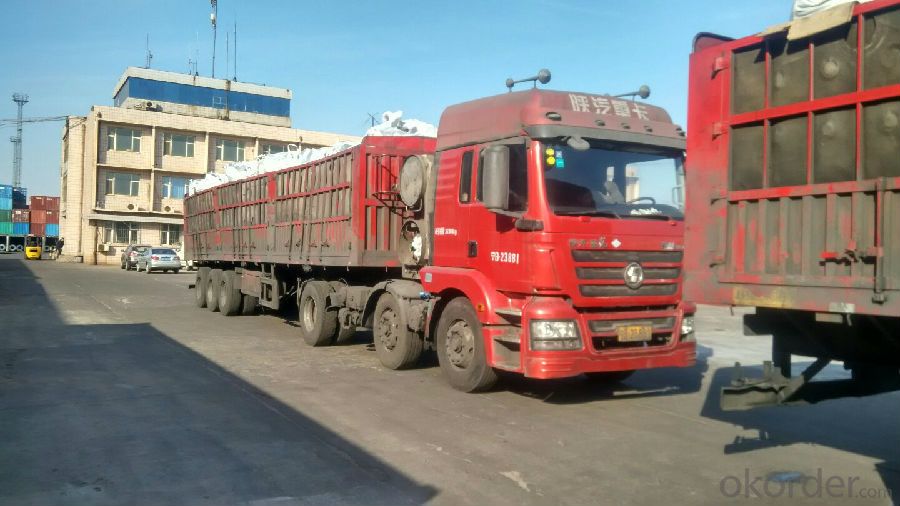
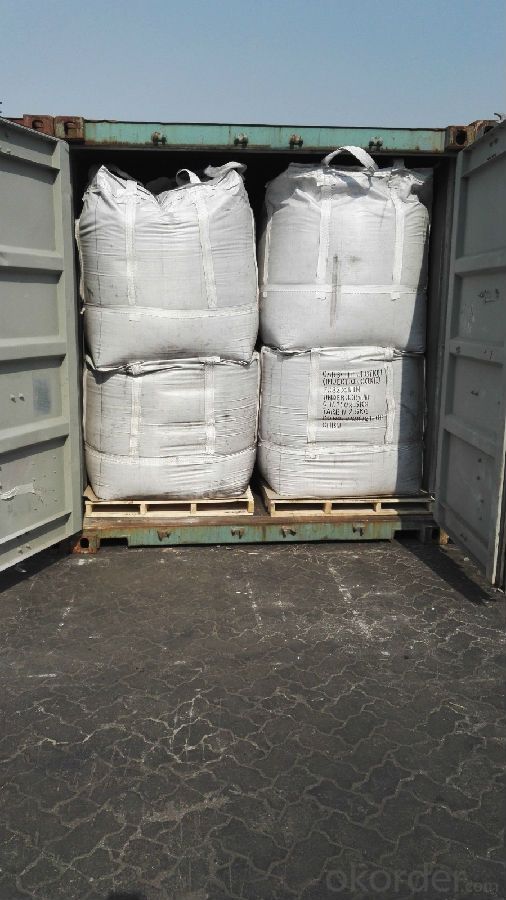
FAQ:
What is the packing?
In 25kg bag/ In jumbo bags without pallet/ Two jumbo bags with one pallet/ or as customers’ request
2. What is the production capacity?
10 thousand tons per month
3 What is payment term?
Irrevocable LC at sight/ 20% down payment by T/T and 80% against BL copy byT/T/ or to be discussed
4 What is the service?
We will send sample to the third party(CIQ, CCIC, SGS,BV or to be discussed) for checking, and present the test certificate and loading repot of shipment.
- Q: There is a graphite mine, looking for three experts engaged in mineral processing industry asked. They say earthy graphite, and the answer to the taste is quite different. Some say that the fixed carbon content of 15, and some say graphite grade 90%. The same sample. Some people say that very valuable, and some say that the grade is too low, worthless. I'm all confused. What do you mean by graphite grade and fixed carbon?
- The taste of graphite powder refers to its purity, that is, the amount of carbon; fixed carbon content refers to the removal of water, ash and volatile residues, it is an important indicator of the use of coal. The two are essentially different
- Q: What can light hydrocarbon carbon five be packed with?
- Light hydrocarbon carbon fiveLight hydrocarbon carbon five is a light yellow or colorless transparent flammable liquid with a density of 0.60-0.68 and a boiling point of 36.1 degrees. The calorific value of liquid light hydrocarbons is 10800kcal/kg. (the current price in Chengdu is 2000 yuan / ton, and the monthly supply is about 1000 tons.).
- Q: Why vegetarianism can reduce carbon emissions?
- This specific or calculated, and if you have done ISO14064, you should know that every year will be the carbon emissions statistics, the general is your year of all activities in accordance with the corresponding CO2 coefficients into CO2 equivalent;If you eat according to statistics, that is to calculate what you eat, how much CO2 is needed to produce;
- Q: What is carbon?
- Life on Earth depends on carbon, a chemical element that is found in all living organisms. It serves as the foundation for the organic compounds that compose our bodies, including proteins, carbohydrates, lipids, and nucleic acids. Carbon can be found in different forms, such as graphite and diamonds, and has the remarkable ability to form strong bonds with other elements. This versatility makes it essential in various natural processes like photosynthesis, respiration, and the carbon cycle, which helps regulate the Earth's climate. Moreover, carbon plays a significant role in industry, where it is utilized as a raw material for producing fuels, plastics, and countless other goods. Overall, carbon is a crucial element that sustains life and drives numerous chemical and biological processes.
- Q: How does carbon dioxide affect textile production?
- Carbon dioxide can have various impacts on textile production. Firstly, the production of carbon dioxide during the manufacturing process of textiles contributes to the overall greenhouse gas emissions, which exacerbates climate change. This can lead to long-term consequences such as extreme weather events, rising temperatures, and sea-level rise, all of which can disrupt the supply chain and production of textiles. Moreover, carbon dioxide emissions from textile production contribute to air pollution, which can have adverse effects on human health. The release of this greenhouse gas can lead to respiratory problems and other respiratory diseases in workers exposed to high levels of carbon dioxide. Additionally, carbon dioxide is often used as a part of the dyeing and finishing process in textile production. This can have negative consequences for the environment as well. Carbon dioxide can contribute to water pollution when it is released into water bodies during the dyeing process, leading to the contamination of water sources and harming aquatic life. Furthermore, the excessive use of carbon dioxide in textile production can also have economic implications. As carbon dioxide is a byproduct of burning fossil fuels, its production is inherently linked to the consumption of non-renewable resources. The reliance on fossil fuels can make textile production vulnerable to price fluctuations, as the cost of carbon dioxide emissions and energy production can vary significantly. To mitigate the negative impacts of carbon dioxide on textile production, various measures can be taken. These include adopting cleaner production techniques and technologies that reduce carbon dioxide emissions, such as the use of renewable energy sources or implementing carbon capture and storage systems. Additionally, investing in sustainable and environmentally-friendly materials, such as organic cotton or recycled fibers, can also help reduce the carbon footprint of textile production. Overall, the reduction of carbon dioxide emissions in textile production is crucial for the industry to become more sustainable and mitigate its environmental and health impacts.
- Q: How is carbon used in the steel industry?
- The steel industry heavily relies on carbon as it plays a crucial role in the production and enhancement of steel. Carbon is added to iron in the fundamental process that transforms it into steel, resulting in the desired properties of hardness, strength, and durability. In steelmaking, carbon is primarily used as an alloying element to improve the mechanical properties of steel. The carbon content in steel can vary depending on the desired grade and application, ranging from 0.1% to 2%. Low carbon steel, with a carbon content below 0.3%, is commonly used for applications that require good formability and weldability. On the other hand, high carbon steel, with a carbon content above 0.6%, is used for applications that demand high strength and hardness. Carbon also plays a crucial role in the heat treatment process of steel. Through carburizing, steel undergoes a heating process with carbon-rich gases or solids to increase the carbon content at the surface. This results in a hardened surface layer with improved wear resistance, while maintaining a tough and ductile core. Additionally, carbon is essential in the use of electric arc furnaces (EAFs) in steelmaking. EAFs utilize electricity to melt scrap steel and other raw materials. Carbon is introduced during this process to reduce the oxides present in the raw materials, allowing for efficient steel production. In conclusion, carbon is widely utilized in the steel industry to achieve the desired properties of steel, enhance its mechanical properties through heat treatment, and enable efficient steel production. This versatile element enables steel to be used in a wide range of applications across various industries.
- Q: What's the difference between an alkaline cell and a carbon cell?
- Carbon batteries and alkaline batteries are dry cells, but only in accordance with the quality of different materials and divided into two categories:2. The battery should be full carbon carbon zinc batteries (because it is the general level is the carbon rod electrode is the zinc skin), also known as zinc manganese battery, is currently the most common dry battery, it has the characteristics of low price and safe and reliable use, based on the consideration of environmental factors, because the ingredients still contain cadmium. It must be recovered, so as to avoid damage to the environment of the earth. (so we usually use the carbon rod, the negative electrode is zinc skin, the battery should be recycled)
- Q: What is carbon fiber and how is it used?
- Carbon fiber is a lightweight and incredibly strong material that is made from thin strands of carbon atoms bonded together in a specific pattern. It is known for its exceptional strength-to-weight ratio, making it significantly stronger than steel while being much lighter in weight. Carbon fiber is used in a wide range of industries and applications due to its unique properties. In the aerospace industry, it is commonly used to build aircraft components such as wings, fuselage sections, and engine parts. Its high strength and low weight help increase fuel efficiency and enhance overall performance. The automotive industry also extensively utilizes carbon fiber in the production of high-performance vehicles. Carbon fiber reinforced composites are used to manufacture various parts, including body panels, chassis components, and interior trims. The use of carbon fiber in automobiles not only reduces the overall weight of the vehicle, but also improves its structural integrity and enhances handling and fuel efficiency. Sports equipment manufacturers incorporate carbon fiber in the production of sporting goods such as tennis rackets, golf clubs, bicycles, and hockey sticks. The material's strength and stiffness allow for enhanced performance, increased power transfer, and improved durability. In addition, carbon fiber finds applications in the construction industry for reinforcing concrete structures, as well as in the manufacturing of wind turbine blades, boat hulls, and various other industrial components. Overall, carbon fiber's exceptional strength, lightweight nature, and versatility make it a preferred choice in industries where high-performance materials are required. Its use continues to expand as advancements in manufacturing techniques and cost reduction efforts make it more accessible to a wider range of applications.
- Q: How is carbon used in the production of carbon fiber?
- Carbon is used in the production of carbon fiber by being subjected to high temperatures and combined with other elements to create a material that is strong, lightweight, and resistant to heat and chemicals.
- Q: What are the main factors that affect the strength of carbon fibers?
- The main factors affecting the strength of carbon fibers arePAN precursorPreoxidationcarbonizationGraphitizationsurface treatmentCoilingcarbon fibre
Send your message to us
FC85 Calcined Anthracite Coal as carbon additive in steel industry
- Loading Port:
- Tianjin
- Payment Terms:
- TT or LC
- Min Order Qty:
- 40 m.t.
- Supply Capability:
- 9600 m.t./month
OKorder Service Pledge
OKorder Financial Service
Similar products
Hot products
Hot Searches
Related keywords
